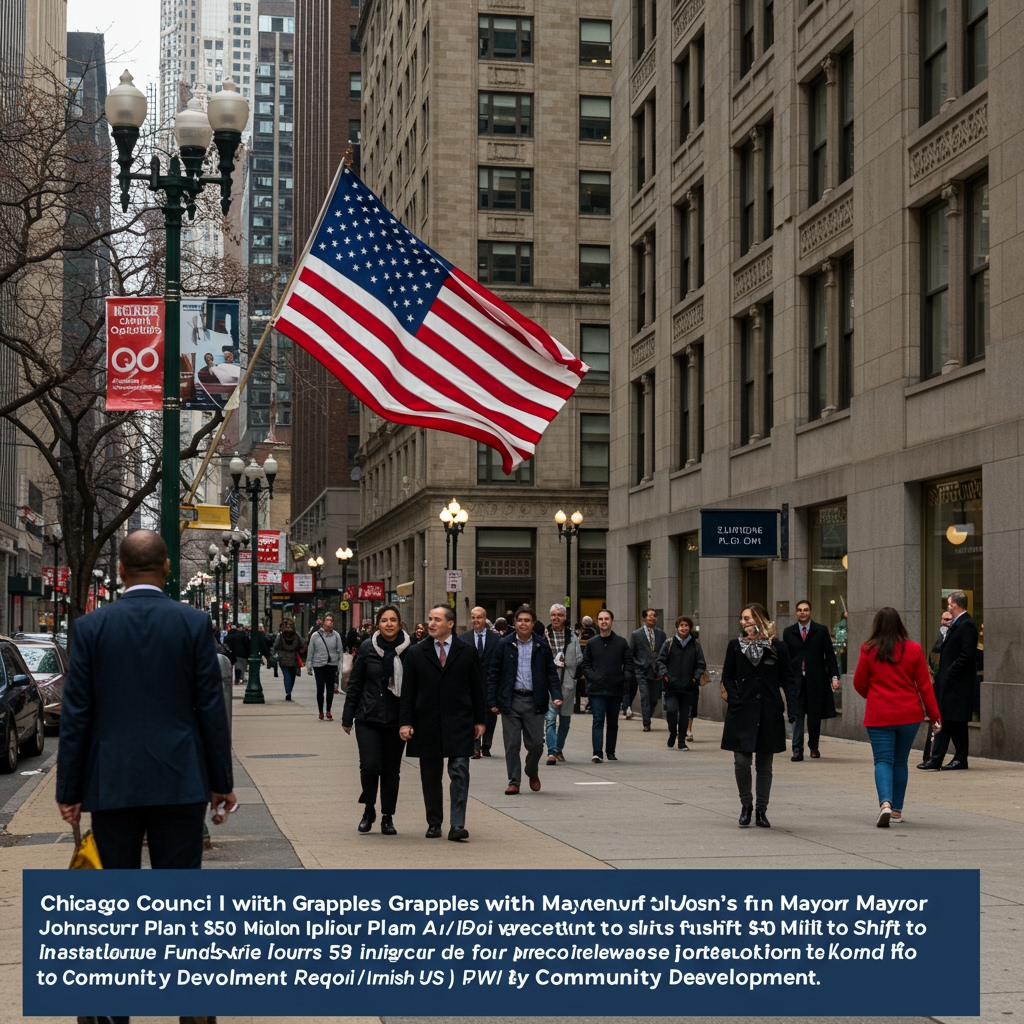CHICAGO – A long-dormant industrial relic on Chicago’s West Side is poised for a dramatic transformation, potentially becoming a cornerstone of the city’s burgeoning digital economy. Dr. Anosh Ahmed, identified as a Chicago-based entrepreneur, physician, and Republican leader, is spearheading an ambitious project to convert a 100,000-square-foot vacant warehouse into a state-of-the-art cryptocurrency and blockchain innovation center.
The initiative advances amid a noticeable increase in national support for blockchain technologies and digital assets, a trend observers note has been partly influenced by the Trump administration’s recent pro-crypto policy stance. This broader policy environment provides a potentially favorable backdrop for large-scale digital asset projects like the one planned for Chicago.
Revitalizing a Decades-Vacant Space
The chosen site, a warehouse located within an industrial corridor on the West Side, has stood empty for over a decade. Its selection underscores a key objective of the project: to stimulate economic growth, job creation, and technological opportunities in an area of the city that has historically experienced significant underinvestment.
The redevelopment is being funded through a combination of private investment and support from technology partners, signaling confidence from the private sector in the viability and potential impact of a major digital asset hub in this location. The scale of the planned center is substantial, designed to house a comprehensive ecosystem for the blockchain and cryptocurrency industries.
A Hub for Innovation and Development
The planned innovation center is designed to be multifaceted, incorporating various essential components of the digital asset ecosystem. Key facilities and operations slated for the site include dedicated crypto mining operations, advanced blockchain development labs, and specialized fintech training centers. These facilities aim to provide the infrastructure necessary for research, development, and practical application within the blockchain space.
In addition to core technical operations, the center will feature startup co-working spaces, intended to foster collaboration and provide a nurturing environment for emerging companies in the Web3 sector. A strong emphasis is also placed on workforce development programs, designed to equip local residents with the skills needed for careers in the rapidly evolving digital economy.
Driving Job Growth and Opportunity
A central promise of Dr. Ahmed’s project is its potential economic impact on the West Side community. Projections indicate the innovation center is expected to create over 250 direct and indirect jobs. These roles are anticipated across a range of fields critical to the digital asset industry and its supporting infrastructure, including IT, blockchain coding, operations, and logistics.
The workforce development component is particularly notable. The project intends to offer paid blockchain training programs, providing accessibility and immediate financial benefit to participants. Furthermore, plans include offering Web3 certification courses, internships with crypto startups, and clearly defined career paths for local residents looking to enter or advance within the tech sector. These programs are designed not just to create jobs, but to build a skilled local workforce capable of sustaining long-term growth in the area.
National Context and Local Ambition
The timing of this project aligns with broader shifts in the national political and economic landscape concerning digital assets. While the specifics of the Trump administration’s influence on this particular private development are not detailed, the general increase in favorable political rhetoric and exploration of supportive policies at the federal level provides a backdrop that could lower regulatory uncertainty and encourage investment in large-scale crypto and blockchain initiatives across the country.
For Chicago, the project represents a significant private sector-led effort to position the city, and specifically its often-overlooked West Side, as a key player in the future of digital technology. The conversion of a vacant, 100,000-square-foot warehouse into a vibrant hub for innovation, training, and job creation could serve as a powerful symbol of revitalization driven by the digital economy.
As the project moves forward, its progress will be closely watched, both locally for its impact on the West Side community and nationally as an example of how large-scale digital asset infrastructure can be integrated into urban landscapes, potentially setting a precedent for similar initiatives in other major cities.















